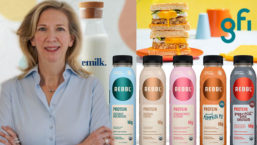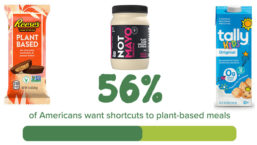Nicholas Roskelly
Nick Roskelly is a thirteen-year veteran of the food and beverage industry, beginning his editorial career in 2001. After covering new product trends for seven years, Roskelly went on to develop an array of digital media products for B2B brands spanning food categories. Today, he focuses on relaying new food and beverage product information through various forms of digital media. Send your news and new products releases to Nick.
Executive Editor New Media/Business
ARTICLES
The flavors of fall call consumers to the promise of cozy season with apple, maple, butterscotch and of course, pumpkin spice
Read More
CATEGORY INSIGHTS: PROTEINS
Alternative Proteins are Reshaping Foundational Food Categories
Cultivated, plant-based, and fermentation-derived proteins, represent an opportunity to reduce risks and improve the efficiency of meat production
June 1, 2023
CATEGORY INSIGHTS: PLANT BASED
Candy, Kids Drinks and Condiments: Plant Based Innovations Push New Boundaries
According to a new survey, more than half of consumers are seeking plant based meal solutions
April 21, 2023
Baking, Nutrition & a Bird’s Prey
Consumers explore a spectrum of food preparation at home
May 7, 2021
We're All Learning Something New in the Kitchen
Throughout 2020, consumers have found the time, patience and interest required to prepare home-cooked meals
February 9, 2021
Adapting to Exponential Future Change
The food industry will continue to innovate even when faced with uncertainty
November 4, 2020
Will We Ever Return to Pre-Pandemic Behavior?
Lessons from intentional disruptive practices may be essential as we confront enduring changes to business practices
August 6, 2020
I Attended a Trade Show in 2020
Until the COVID-19 crisis descended, the year was shaping up to be charged with innovation from food and beverage product developers
May 15, 2020
Meeting Food & Beverage Consumer Demand During COVID-19 Crisis
The food and beverage industry's essential status ensures continued business as economic and health concerns persist
April 27, 2020
Evolving Industry Responses to COVID-19 Crisis
Retail food and beverage sales soar as companies scramble to hire workers, maintain safe working conditions
April 3, 2020
Unlock the Future of Food and Beverage Innovation
Are you a leader in research & development? Stay ahead of the curve with Prepared Foods, the premier source of information and insights for today's trend leaders and taste-makers in food and beverage manufacturing.
JOIN TODAYCopyright ©2025. All Rights Reserved BNP Media.
Design, CMS, Hosting & Web Development :: ePublishing






